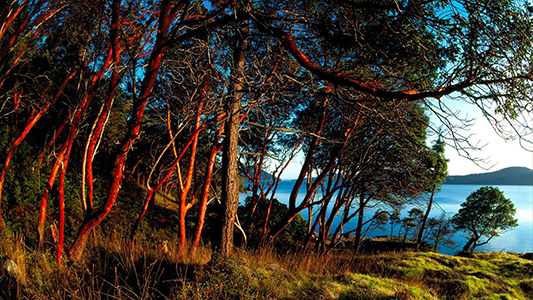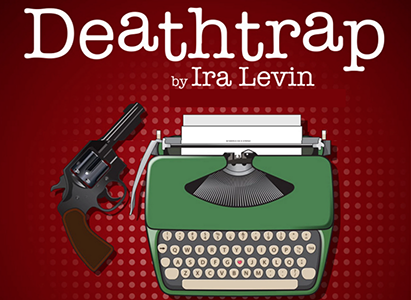— from Mia Kartiganer, Port Commissioner-Elect —

The brilliance of “By the People for the People” governance is that you needn’t be over-educated in any particular field in order to serve, within reason. The state of Washington provides training for newly elected individuals in every role.
I thoroughly enjoyed learning the dos and don’ts of Port Commissions at the WPPA (Washington Public Ports Association) training for new commissioners and annual conference. I had already read the materials before deciding to file as a candidate, yet found it very helpful to go over them again with anecdotes from people who have been doing this for some time.The WPPA provides ongoing support and resources for all of Washington’s ports including lobbying and legal guidance.
I was surprised to learn that of the 150 ports in the US, 71 are in the state of Washington. As great in size as Sea-Tac and as small as Keyport whose three commissioners divvy up the responsibilities of running their small marina. Equally surprising to me was that only 5 ports have 5 commissioners; Sea-Tac, Tacoma, Everett, Vancouver, and Orcas (this is where I would insert a baffled emoji). In our case it keeps us from risking a quorum every time we go to the store.
Now I would like to share what I believe to be the most important thing I have learned through continued conversations with sitting commissioners. It seemed at odds to me that the environment could be so high on the list of a port’s stewardship responsibilities and yet have caused so much consternation and disquiet within our community. The FAA’s prescribed steps for creating a Master Plan begin with creating a long term vision that adheres to their/its safety guidelines. It isn’t until step five, where we live and breath, that attention is turned to the environmental impact study. It isn’t low on the priority list, it just comes after the scope and area of the project has been established so that it can be focused. I know that I would have felt less anxious had I better understood this. I believe we could have avoided much strife had this been made clearer from the outset. Everything in order.
Going forward you will find that the Commissioners of January 2020 are all deeply committed to making sure that the members of this community have access to information, answers to questions, and, to the best of our ability, peace of mind regarding the direction of the port. It’s what I signed up for and what you have a right to expect.
**If you are reading theOrcasonian for free, thank your fellow islanders. If you would like to support theOrcasonian CLICK HERE to set your modestly-priced, voluntary subscription. Otherwise, no worries; we’re happy to share with you.**








Thank you Mia for this information
Looking. Forward to serving as a Port Commissioner
Thank you Mia, and thank you Pierrette. The environment, (that which allows us to live), should be the highest criteria on EVERY checklist. I wonder how many letters (how many votes), like mine were tossed aside during the recent past public comment period because they were based upon environmental concerns. I also wonder what the numbers were… how many people voted for Option 1, (and their vote was then cast aside)?
Thank-you, Mia!
Yes, thank you, Mia!
Thanks,Mia,very informative.
What does “bring order to the Port” mean? If it suggests that we have been in disorder I strongly disagree. Perhaps as a long time Port Commissioner I am rather sensitive to suggestions of this sort. Is there significance to this particular phraseology?
Mia; I’d be happy, as would others who understand environmental issues and what things mean, to meet with you to discuss the differences between EAs – Environmental Assessments which are federal, and SEPAs – State Environmental Protection Act (1971), and why we would want SEPAs to happen for any projects proposed.
Most Ports go for the EA, since they can just declare things “non significant” without having to consider function of riparian wetlands, at-risk species, cultural (Aboriginal) considerations, quality of life, noise issues, and rural character – to name a few.
Since our Port sits on an entire wetland watershed system, with important nearshore environments and bodies of saltwater on BOTH sides of Eastsound watershed forested wetland, our situation is different than that of most other ports.
We’d love to bring you up to speed – those of us who have attended Port meetings for the last year and a half, and who’ve followed the Master Plan process closely, done the research, and understand these issues in a way that WPPA may not have explained to you. Let me know when you can meet with us.
I hope that our incoming commissioners will make use of our work and data, and ask hard and incisive questions of the FAA; invite them to actually come walk these lands and see for themselves what our situation is. If that was never done by the sitting or past commissioners or the past manager, our community deserves that now, before these projects are begun to even be designed.
Steve, the flippant headline was totally from me in a word play attempt. I may have failed, it seems. In no way was that anything that Mia contributed. It was me…
To answer Michael Johnson’s question, in the first round of comments due in early August 2018, out of about 225+ commenters and about 250 comments, only about 30 were for anything other than alternative 1, which, after the fact, we learned wasn’t a REAL option (then why have it in the Plan?). Our comments were indeed brushed aside. Those 20 or so for the other alternatives, including maximum buildout, were given glowing praise. It does make one wonder about the obvious bias given – all there for anyone to read. I have those comments documented in case they disapppear when the Master Plan is finalized.
During the second comment period, due in October after DOWL presented the “preferred plan,” I think only about 40 people actually commented. I’m not sure why the number was so low; maybe people felt that their comments would just be brushed aside again, or that it all was a “done deal” in terms of having to develop everything. It’s not. The ratio was much closer between “for” and “against” development in the 2nd comment period.
We’ll have a chance to comment one last time, for the record, once the master plan is finalized. I encourage everyone who felt ignored before, to continue to use your voice to say what you want, and don’t, and why. Safety CAN be achieved without maximum buildout!
Right now, anyone can go and read the comments on the Port website’s DOWL master plan page, but I don’t think DOWL will be required to keep it there once the master plan is finalized… so we need to have a permanent database somewhere. Be sure to read the appendices attached; especially Paul Anderson’s letter.